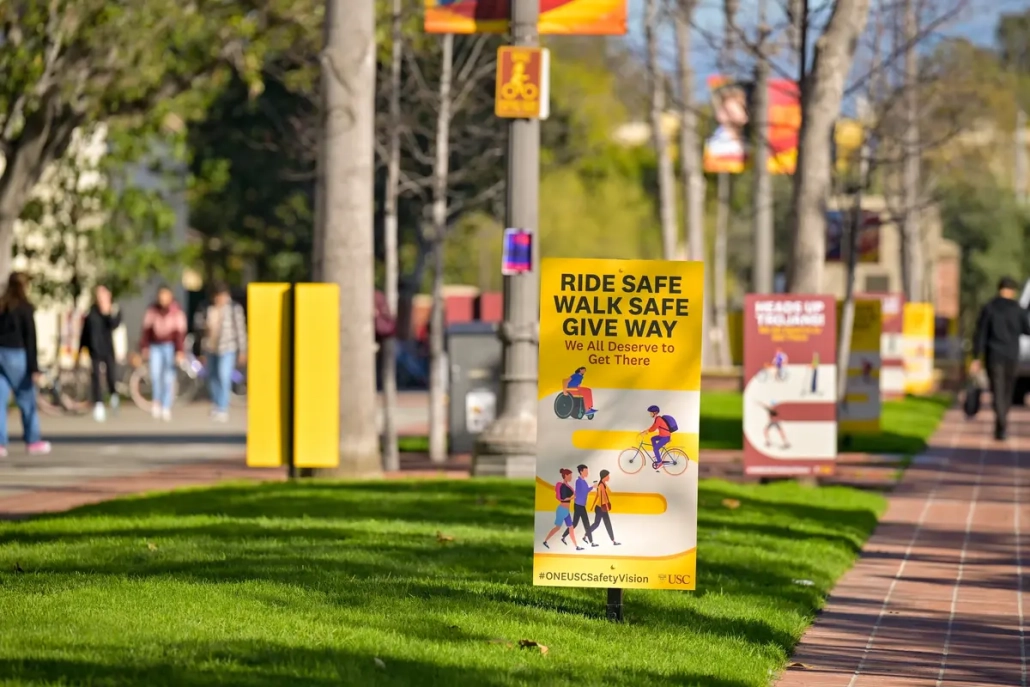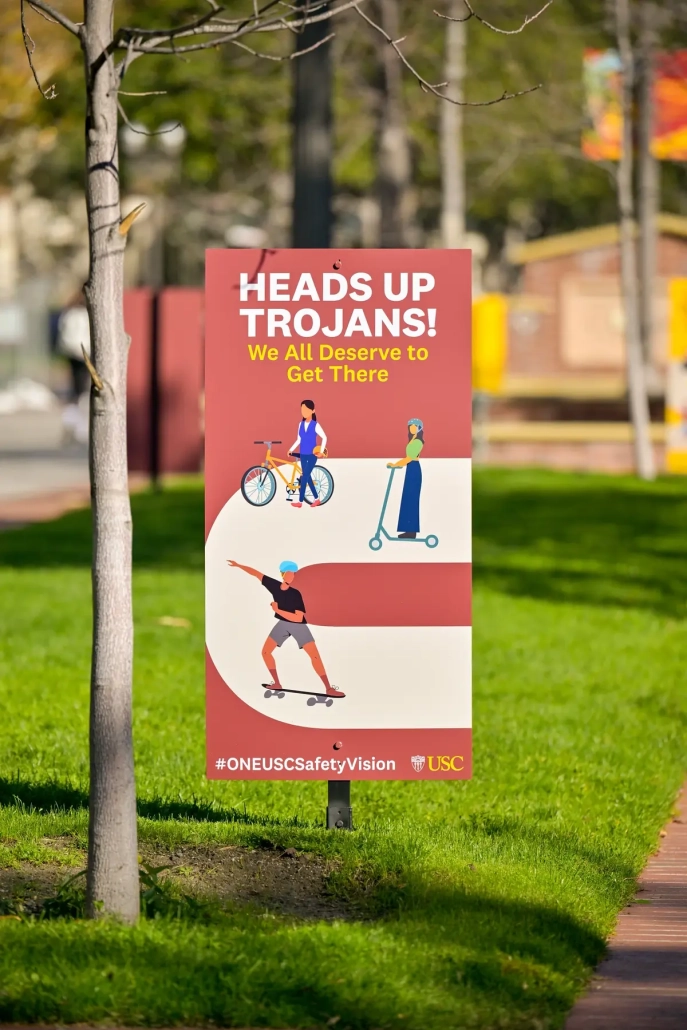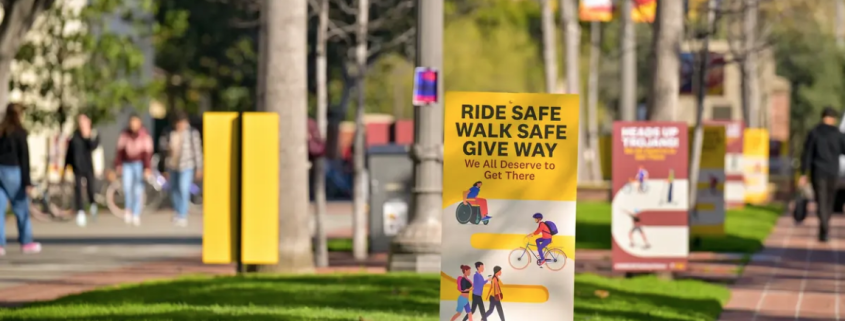Students create traffic safety campaign

Spencer St. Denis was riding his scooter out of Downey Way Parking Structure in Spring 2022 when he almost hit a student. If he had not hit his brakes in time, St. Denis said, many things would have changed in his life.
Paulene Ng Chee, a junior majoring in communication, and Monique Chavez, a graduate student studying public relations and advertising, have seen many students getting into similar collisions on campus and developed “negative feelings of resentment” toward the issue.
These students’ accounts of accidents on campus motivated them to pursue a larger mission at USC: A safety campaign to reduce pedestrian and mobility device collisions as part of ONE USC Safety Vision — an overarching view of safety on campus that is built on trust, inclusion, respect and belonging. The students created the campaign through a remote summer internship at the Annenberg School for Communication and Journalism that aimed to promote campus safety.
“Maybe [students] don’t see or know the backstory behind [the campaign], but the sense that you can leave things better than you found it, I think that’s my message to all the students here.”
Spencer St. Denis, senior majoring in communications
According to DPS reports, 157 traffic collisions occurred last year at the University Park Campus, with a majority of them involving e-scooters, skateboards, e-carts and bicycles.
While the internship began during the summer and ended in September, the campaign was launched in the first week of the spring semester. The tagline, “We all deserve to get there,” aimed to encourage students to be more mindful about the safety of others around them. It’s necessary to shift students’ attitudes away from blaming others when collisions occur, Ng Chee said.
“Our first reaction is to either get angry or claim that it’s not [our] fault … but whoever’s fault it is doesn’t really stop [collisions] from happening,” Ng Chee said.
While the safety campaign is a part of ONE USC Safety Vision, it was important that the initiative had a student-led voice to create a message that resonated with the USC community, Ng Chee said.
“I don’t like arbitrary random people trying to tell me ‘this is what you’re supposed to be doing,’” Ng Chee said. “Instead, I wanted to encourage people to make the choice of [taking] a step back because it still gives [students] that kind of autonomy.”
Chavez took part in the design process of the campaign and said placing signs where accidents happen was beneficial for spreading the message to as many students as possible.

“We were strategic in thinking about where we want to see signs on campus [and placed them] in those busy heavy traffic areas, near the Ronald Tutor Campus Center and areas where there’s always a ton of traffic, pedestrians, bikes and other mobility devices,” Chavez said.
Ultimately, Ng Chee said the safety campaign values the collective efforts of the student body and aims to create an environment where individuals are encouraged, not mandated, to care for the well-being of others.
“We’re such a diverse campus that, sometimes, it’s easy to end up cornered into your little pocket,” Ng Chee said. “That kind of mindset doesn’t really help make sure everybody on campus is safe.”
While the safety campaign signage has been removed, St. Denis hopes the team’s collective efforts to reduce pedestrian and mobility device collisions will spread a larger message that students should not view problems on campus as things they cannot control. Instead they should find ways to actively create change on campus because USC is more than willing to listen.
“I hope the students are proud of the work that we’ve done,” St. Denis said. “Maybe they don’t see or know the backstory behind it, but the sense that you can leave things better than you found it, I think that’s my message to all the students here.”

